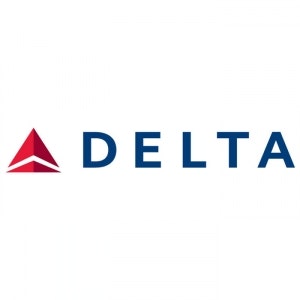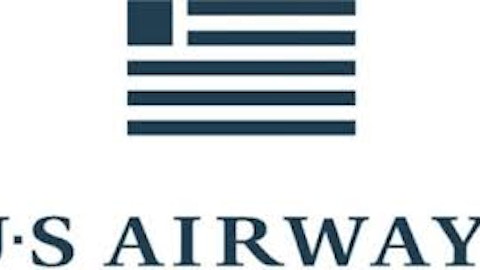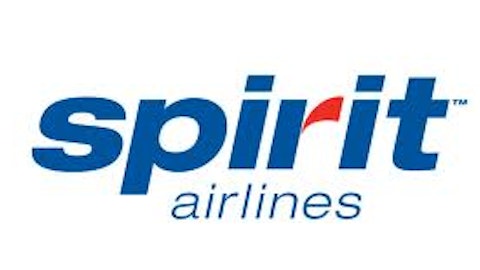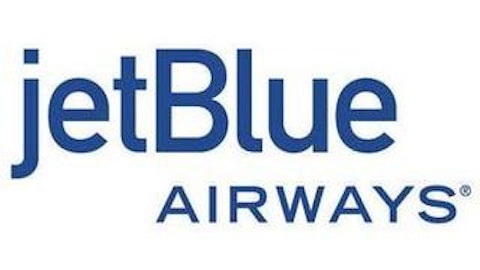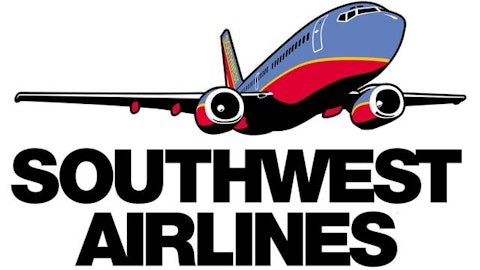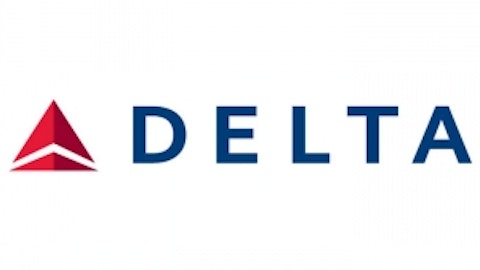According to a recent study from the International Air Transport Association (IATA), U.S. airlines’ revenue will be 20% higher than what was forecasted a quarter earlier. Passenger carriers are forecasted to generate $12.7 billion net income compared to earlier figures of $10.6 billion, which was the consensus among analysts back in March. Compared to last year, this would connote a 67% increase in year-over-year profit for the industry. An optimistic IATA Chief, Tony Tyler, mentioned earlier this week in a conference in Cape Town, South Africa, that the airlines have done a “pretty good job” under the difficult economic climate. The industry-wide revenue growth reflected well on the major U.S. carriers during last 12 months as their stock prices skyrocketed. The average P/E ratio for the airline industry remains at 11.17, which suggests the market is not overwhelmingly high at the moment. But the question remains, is there any further growth potential for the airline sector amid rising jet fuel prices?
Jet Fuel is Not Burning Too Hot
One of the major variable costs to airline operators is the cost of jet fuel. According to the U.S. Energy Information Administration, in 2009 a gallon of kerosene-type jet fuel only cost $1.66. It climbed to $2.68 per gallon in June 2012. However, since then, this commodity had been relatively stable, with prices ranging between $2.68 – $3.22 over the course of the last 12 months. The price has been one of the keys to stable growth in the airline industry over the last few quarters. PADD 3 type aviation fuel’s stock grew 491,000 barrels to a total 13.5 million back in February 2013, and the price of jet fuel had been declining ever since it decreased from an annual high of $3.22 to $2.82 in April. When fuel price takes up 40% of the cost of operation, the declining jet fuel price has indeed added to the profit margins of the major airlines in the U.S., and their stock prices have soared.
Delta Air Lines
Delta Air Lines, Inc. (NYSE:DAL) provides air transportation for passengers and cargo shipment services throughout the United States and around the world. Compared to a year earlier, Delta’s stock price has increased 86.25% as it climbed from $10.18 on June 4, 2012, to $18.96 on May 15, 2013. This is despite the 94% drop in earnings for the last four quarters.
In terms of net tangible assets, Delta Air Lines, Inc. (NYSE:DAL) has a value of -$16.4 billion. Delta’s P/E ratio is currently at 17.16, making it modestly over the industry average, meaning that investors believe that earnings with increase considerably, especially given the negative tangible book value. Delta’s stock price ranged between $17.55 and $18.36 last week, and TheStreet rated Delta Air Lines as a “hold” on June 3.
Southwest Airlines
Serving 72 cities in over 37 states, Southwest Airlines Co. (NYSE:LUV) also saw a major increase in market capitalization as their stock price mounted 67.21% over the course of last year, as the price went from $8.60 on June 4, 2012, to $14.38 on May 17, 2013. Its stock price found good support around $13.98 and had been ranging within the yearly high since the first week of May 2013. Delta Air Lines, Inc. (NYSE:DAL)’s P/E ratio remains quite a bit higher at 27.84. With only a 21.87% gross margin compared to industry’s 42.53%, it attempted to increase shareholder value by announcing a 400% boost in quarterly dividends last month. As the market has already engrossed the dividend hike, Southwest Airlines Co. (NYSE:LUV) appears vulnerable to short selling by opportunistic investors.
United Continental Holdings Inc
The two largest U.S. carriers, United Air Lines and Continental Airlines, are wholly owned subsidiaries of United Continental Holdings Inc (NYSE:UAL). It also has special associations with a variety of U.S. regional carriers in order to offer jet and turboprop services, which are marketed as United Express. United Continental Holding’s share price followed a similar bullish pattern in accordance with the airline industry, as its stock went airborne to $34.75 on May 17, 2013, from only $22.52 a year earlier on June 4, 2012, constituting a 54.31% gain for the stakeholders. With a negative EPS at -2.21, the company has only managed to produce a 20.45% gross margin over the year, compared to the industry’s 42.53% average.
While the gross margin analysis gives us a comparative scenario among large carriers, the sector’s gross margin has to be analyzed from a perspective where the average is made up of a lot of smaller regional carriers. Being smaller in size, the majority of U.S. airlines could utilize their asset class better compared to the larger national carriers such as Delta or United Continental Holdings Inc (NYSE:UAL).
Conclusion
Aviation is a cyclical industry, and revenue growth is coming up next. However, one of the biggest barriers to growth will be the cost of fuel. As the U.S. economy is booming amid policy support from the government, Mr. Richard Anderson, Chief Executive of Delta Air Lines, Inc. (NYSE:DAL), mentioned in early June that he is not worried about oil-price trends. His optimism is supported by the fact that the U.S. is moving towards self-sufficiency, which will reduce pressure on profit margins. As U.S. carriers are focusing on filling more seats on larger and fewer flights, fuel efficiency is driving demand down as well.
The growth in the aviation sector will likely to continue over the next two quarters as the demand for air travel goes up and fuel prices are forecasted to remain well within these companies’ means.
The article Airline Stocks are Climbing Steadily Without Signs of Landing originally appeared on Fool.com and is written by Mike Thiessen.
Mike Thiessen has no position in any stocks mentioned. The Motley Fool recommends Southwest Airlines Co. (NYSE:LUV). Mike is a member of The Motley Fool Blog Network — entries represent the personal opinion of the blogger and are not formally edited.
Copyright © 1995 – 2013 The Motley Fool, LLC. All rights reserved. The Motley Fool has a disclosure policy.
